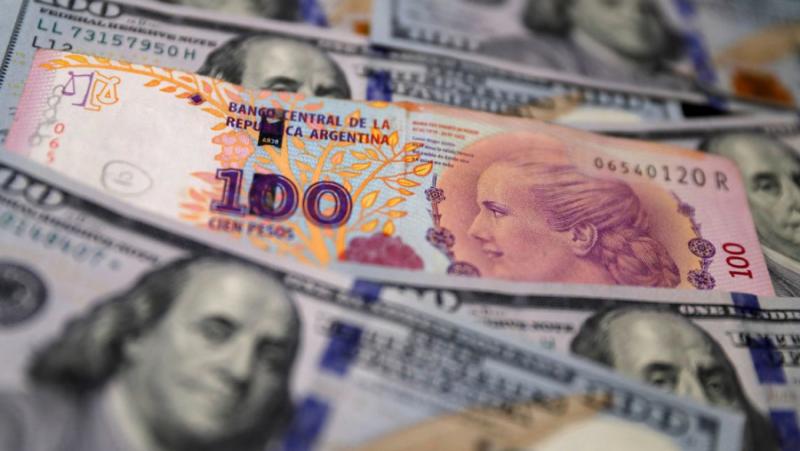/ world today news/ The monetary authorities of Russia are only imitating activity to circumvent the sanctions of the collective West
Since the spring of 2014, when the US and its allies began imposing the first sanctions against the Russian Federation, Moscow has said it is moving towards de-dollarization of the domestic economy. And first of all, in Russia’s foreign trade accounts. However, until February 24, 2022, progress in de-dollarization (broadly understood as the displacement of not only the US dollar, but also the euro, the British pound sterling, the Japanese yen and other currencies of “hostile” countries) was very modest.
In 2013, the US dollar accounted for 80.0% of Russian exporters’ foreign exchange earnings; the share of the euro is 8.3%. In 2021, these figures are 54.5% and 29.7%, respectively. Thus, in 2013, the share of these two currencies was 88.3%; in 2021 – 84.2%. To put it mildly, the success is very, very modest.
In 2013, the share of the dollar in foreign currency transfers for Russian imports amounted to 28.0%; of the euro – 40.6%. Last year, these figures were 35.8% and 30.4% respectively. For the period 2013-2021, the share of the two currencies in the payment of Russian imports decreased from 68.6% to 66.2%. Success is microscopic. Last year, the US dollar and the euro dominated both export and import payments. In exports, the Russian ruble in 2021 represents only 14.3%; in imports – 27.9%.
The Central Bank and the Ministry of Finance of Russia spoke from high rostrums about the need to de-dollarize the international payments of the Russian Federation. But in practice they did everything to prevent dedollarization. They pursued a policy of weakening the exchange rate of the ruble. Clearly, any currency with clear signs of weakening cannot be in high demand.
At the beginning of March, the Central Bank of Russia closed a significant part of its statistics. Among other things, he closed the statistics on the currency structure of payments in the field of foreign trade (previously, since 2013, the Bank of Russia gave such a structure in the context of four items: Russian ruble; US dollar; euro; other currencies).
But on December 1, the Central Bank published on its website the next bulletin “Financial Stability Review (II-III quarter of 2022)”. It contains some important figures (which since the beginning of March were considered secret) showing major changes in the currency structure of Russian foreign trade settlements in 2022. The total share of the US dollar and the euro in all foreign trade payments at the end of last year was 79%. And according to the results of the third quarter of this year, it has decreased to 50%, that is, by more than a third. Accordingly, the share of the Russian ruble and other currencies increased from 21% to 50%, i.e. almost 2.4 times. It can be assumed that among the “other” currencies, the lion’s share belongs to the Chinese yuan.
The reason for such significant changes in the currency structure of payments is obvious: Russian participants in foreign trade relations tend to distance themselves from dollars and euros, which have become “toxic” currencies for them.
Russia’s trading partners also began to fear such currencies. In the end, they unwittingly find themselves under the sword of Damocles of secondary sanctions. In addition, after February 24, the share of the countries of the Eurasian Economic Union, with which a significant part of trade was carried out in rubles before, increased in Russia’s foreign trade.
At the end of the three quarters of 2022, the share of the ruble in export estimates increased to 32.4%, which is almost 2.6 times higher than the value of this indicator at the end of last year (12.3%). At the same time, as noted in “Overview …”, ” the reorientation of trade flows to the Asian direction and the change in the currency of settlements under existing contracts with companies from China and other countries contributed to active growth in the share of settlements in Chinese yuan from 0.4% to 14%”.
There was also a rapid decline in the share of toxic currencies in the operations of the Russian market, both on the exchange and on the counter. For 9 months of 2022, the share of transactions in US dollars on the currency exchange decreased from 52% to 34%, in euros – from 35% to 19%. Together, the share of these two major toxic currencies fell from 87 percent to 53 percent, almost 2/5.
As noted in “Overview…”, the share of exchange trading in currency pairs using the yuan increased from 3% in March to 33% in November. That is, the Chinese currency has already bypassed the euro and is on the heels of the US dollar. The volume of trade with the currencies of other friendly countries per month increased 6 times from 6.5 billion rubles. in March to 39.4 billion rubles. in September. A similar trend is also observed in the OTC market, as stated in “Overview …”. The total volume of transactions on the Moscow Stock Exchange in November this year, according to its data, amounted to the following values in the main currencies (trillion rubles): US dollar – 1.56; Chinese yuan – 1.23; euro – 0.83.
Of course, there may not be further equally rapid growth in transactions in the yuan and other “friendly” currencies. Here I agree with the director of the analytical department of the investment company “Region” Valery Weisberg, who thinks that “the main process of switching to the ruble as the main settlement currency is probably coming to an end” . As a result, as this expert notes, a ratio should be obtained that will be similar to the new geographical structure of foreign trade. This structure still has the potential to increase exports to EAIS countries, but these supplies will not grow at the same rate.
Of course, further de-dollarization will be hampered by the fact that the Russian economy is still heavily dependent on the export of oil and a number of other natural resources, the prices of which are determined in US dollars and euros.
However, there are other reasons that can stop the further growth of the ruble and national currencies in Russian settlements. Due to such disadvantages of these currencies as high volatility and tendency to depreciate over long periods of time. By the way, the increased interest of our trading partners in the Russian ruble is partly due to the strong upward trend of its exchange rate in the spring and summer. And at the end of the year, a tendency to weaken the Russian ruble is observed, which will continue into the next year.
In order for the increase in the share of the Russian ruble in international payments of the Russian Federation not to be of an opportunistic nature, it is necessary to ensure maximum stability of the exchange rate of our national currency. And this is exactly what the Bank of Russia stopped doing from the end of 2013 – the beginning of 2014.
After taking the chair of the Bank of Russia in 2013, Elvira Nabiulina said that from now on “The central bank will focus entirely on so-called inflation targeting, and the ruble exchange rate will be allowed to “free float”. The first result of such a strange policy was an almost two-fold collapse of the ruble against the US dollar and other reserve currencies.
By the way, in 2014, Moscow and Beijing negotiated the transition to bilateral trade settlements in national currencies, but after the collapse of the Russian ruble in December 2014, the Chinese side abandoned all previously reached agreements.
Instead of pursuing a long-term line to use the Russian ruble and the currencies of our partners in trade and other foreign economic transactions, the Russian monetary authorities are only mimicking the activity of circumventing the sanctions of the collective West.
One of these initiatives is the proposal to pay in cash for foreign trade transactions. I have already written on this topic expressing my concerns: “The proposal to allow cash trading is a double-edged sword. On the one hand, the new rules can help circumvent Western sanctions, as cash transactions are not visible to Western financial intelligence agencies. On the other hand, the new rules can become a convenient cover for those who are used to working “in the shadows.”
I can only add: the participants in the transactions are unlikely to use cash in the form of Russian rubles and the national currencies of the partner countries. After all, these currencies are already protected by the financial intelligence and other supervisory organizations of the West and can easily be transferred in a non-existent form without any risks to the participants of the transactions.
This means that we can talk about using cash in the form of US dollars and Euros. This means that smuggling is unknowingly encouraged, and with the use of toxic currencies. Such decisions may lead to a resumption of the dollarization of the Russian economy in its wildest form – in the form of cash.
Translation: ES
Subscribe to our YouTube channel:
#geographic #structure #Russias #foreign #trade #hold


